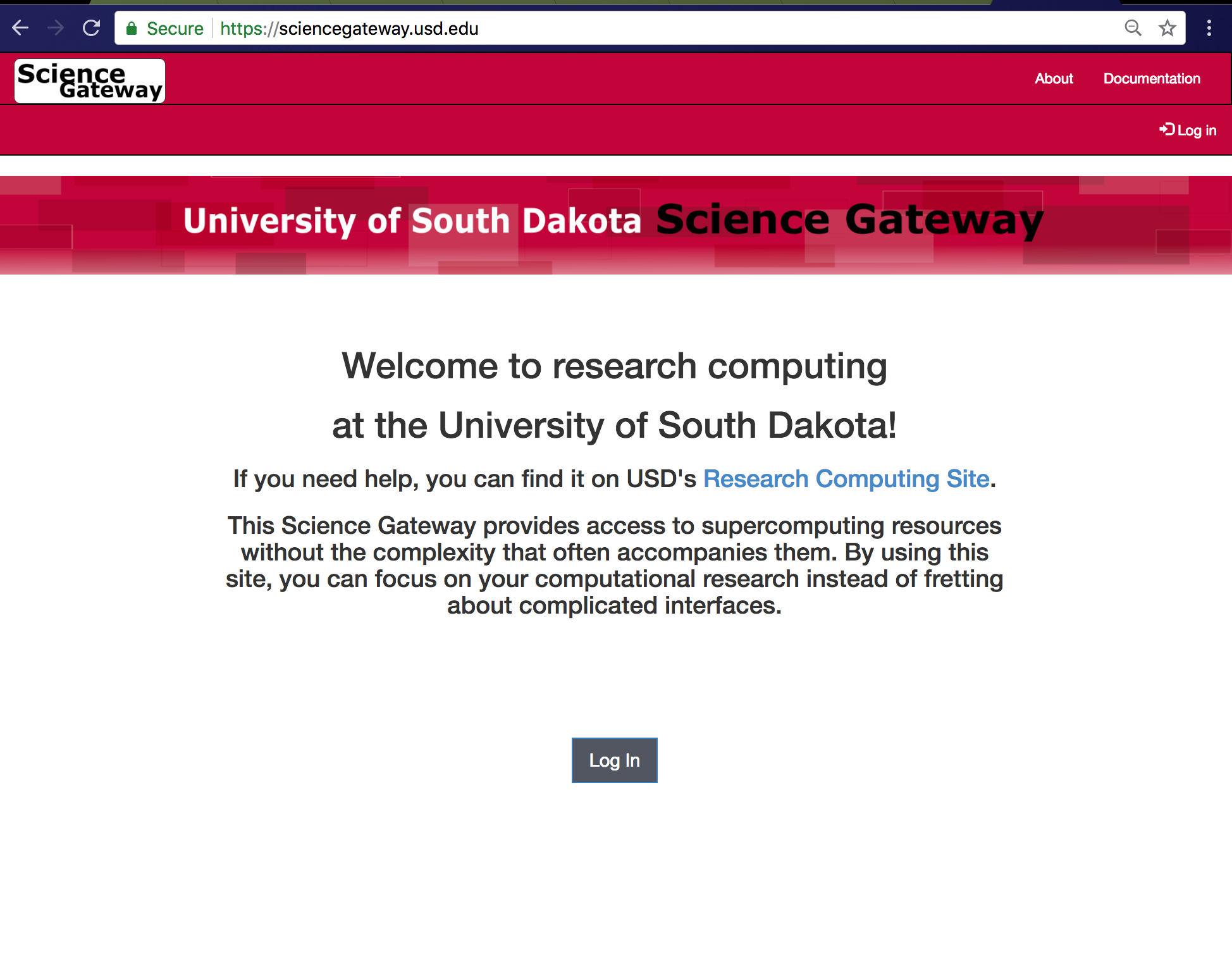New Gateway Brings Advanced Computing Resources to the University of South Dakota
- Details
- Parent Category: blog
- Published on Wednesday, 01 August 2018 16:00
By Nayiri Mullinix
"The USD gateway is focused on lowering the bar for advanced computing and simplifying a researcher’s transition to campus and national HPC systems. The goal of the USD science gateway is to increase researcher productivity in groups unfamiliar with advanced digital resources and to provide an accessible platform for learning scientific applications without the overhead of also learning HPC. By working with SGCI we have produced a gateway that provides four of the most commonly used applications in Biology and Chemistry, paired with authentication that allows users to log in with their existing campus credentials."
For researchers and students at the University of South Dakota (USD), access to advanced digital resources and cyberinfrastructure has been limited. Doug Jennewein, Director of Research Computing in Information Technology Services at USD, hoped to change this. After seeing a presentation about SGCI and learning about the services available, he had an idea. What if he could use the resources offered by SGCI to build a science gateway for accessibility and participation? Doing so would lower the barrier of entry for running complex scientific applications in a high performance computing (HPC) environment and also ease the transition from campus HPC resources to national HPC resources. He knew that doing so would give researchers and students the opportunity to step away from their laptops and onto shared resources that could run quicker and larger jobs.
The idea has now become reality as the USD Science Gateway, which will launch officially and be in use on campus as of fall 2018.

After submitting a Consulting Request Form, Jennewein got paired with SGCI’s Extended Developer Support service area to work with consultants who could create what he had in his mind: a science gateway built not for a specific domain, but rather one that would address the immediate need of building awareness and beginning literacy of computational tools at USD, thus paving the road to high performance computing on campus.
“For researchers and students on our campus, this gateway will build awareness and literacy of the concepts surrounding advanced computing while at the same time providing a platform for accelerated research.”
At the time that Jennewein approached SGCI, there was one high performance computing cluster at USD, and while he was working with SGCI, he also obtained a new cluster. With these clusters, SGCI consultants Eroma Abeysinghe, Sudhakar Pamidighantam, and Suresh Marru were able to complete work that resulted in the initial site deployment that included tool integration, documentation, and outreach, allowing USD Research Computing staff to easily expand the gateway to new use cases in the future. The gateway was deployed and configured using the Apache Airavata middleware including the web-based PHP gateway developed in laravel framework. The EDS consultants set up four applications targeting bioinformatics and materials chemistry, which comprise the biggest use cases of researchers and students that Jennewein hoped to reach in the gateway’s initial phase.
Everything is now in place for students and researchers alike to submit computational jobs. Training will be provided to researchers as part of the regular on-campus orientation at the start of each semester, with the first happening this fall. Even before the first training has happened, Jennewein is toying with how to make these resources available more broadly in order to reach other researchers and students in South Dakota.
“For researchers and students on our campus, this gateway will build awareness and literacy of the concepts surrounding advanced computing while at the same time providing a platform for accelerated research.”
One idea for reaching a broader audience who can benefit from the USD Gateway is to offer mini-workshops that would demonstrate how the gateway can be used by partner schools that haven’t previously used advanced computing. The partner schools include seven mostly undergraduate universities, two of which are tribal schools. USD is the eighth and largest of the partners, with an enrollment of around 10,000 students and about 450 academic staff. Successful engagement with the partner schools, which has the potential to reach thousands of additional students and faculty, could grow the impact of the USD Gateway significantly.
Jennewein says that, without this collaboration with SGCI, the USD Gateway could never have launched. His words of advice to those considering requesting SGCI resources? “Don’t be afraid. I was afraid to ask because I thought USD was too small and that we didn’t know anything about software and how it works but, ultimately, that didn’t matter. No project is too small, too niche, or too beginner.”
Read more about the USD Gateway:
Science Gateway Implementation at the University of South Dakota: Applications in Research and Education